How to care for Benjamin's ficus in winter at home?
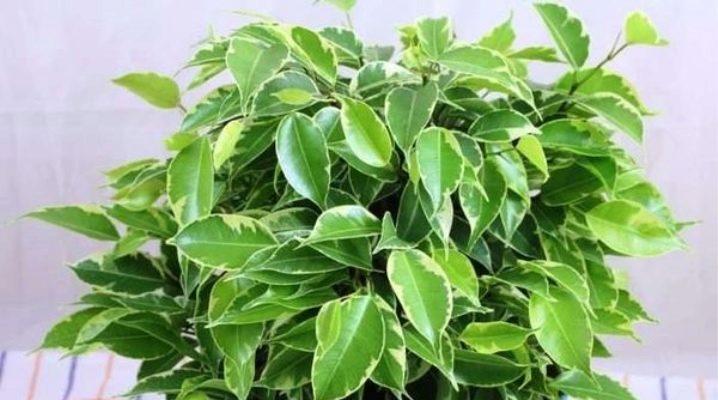
In nature, Benjamin's ficus can be seen in the Asian tropics, at the mountain foot, in humid rain forests. However, this plant attracts the eye not only in tropical landscapes, it was successfully "domesticated". Now ficus decorates the interiors of many apartments and offices. It is not very difficult to care for him, and this statement applies more to young plants, and the adult Benjamin ficus is an even less vulnerable culture.
Lighting
The plant is rather picky about light. It can definitely be called light-loving, but it does not tolerate direct hit of rays. The optimal solution is diffused, sufficiently bright light.... The location of the plant can be different, but the preferred option is the western and eastern sides. If the ficus is placed in the south, then it will have to be shaded in some way. The north side is completely undesirable for culture.
If the leaves of the Benjamin ficus turn yellow, this indicates a lack of light. At least three times every 10 days, turn the flowerpot in different directions to the light rays: this will help to make the lighting evenly.
In winter, the daylight hours are short, therefore artificial sources of illumination are needed. If the ficus is of a standard size, then it can be located 20 centimeters from the lamp, which should shine for at least 8 hours a day (this period can be increased to 14 hours).

Temperature
The ideal summer temperature for a plant is from 23 degrees (this is the maximum) to 18 degrees. Winter care at home involves temperatures above 16 degrees... If the temperature drops during the winter, the tropical pet starts to get sick.
The fact that the ficus loves fresh air also cannot be avoided. He does not tolerate drafts, but if you take him out to the balcony or leave him on the windowsill on the street side, he will “ventilate” well. However, if there is a strong wind outside, remove the ficus from there. If you open a window, also set the plant aside..
How to deal with the cold?
Freezing for ficus is extremely dangerous. If a low temperature is firmly kept in the room for a long time, the risks increase: in some cases, the plant can no longer be saved. Fifteen degrees is already a low temperature for a culture.... The tropical plant has not adapted to our latitudes enough to survive in such conditions. For the same reason, many experts do not recommend buying a ficus in winter: while you carry it in the cold, it can freeze a lot.
If the place for the ficus is chosen correctly, it is warm enough, and drafts do not threaten it there, then the plant has good prospects.
You can insulate the ficus like this:
- put an insulator under the pot (felt, polystyrene, newspaper);
- abandon the ceramic pot (this will only aggravate the freezing of the culture);
- make a restriction for the contact of ficus leaves with window panes (if this is not resisted, then the leaves will begin to curl and dry, and then the plant will die).
For the above reason experienced florists do not put ficuses on windowsills. They place such plants on bookshelves, whatnots, in special stands, pots.

Watering
Due to the reduced temperature in winter, ficus is especially attached to heat. This issue can be partially solved by making the watering warm. The optimum water temperature is 30-40 degrees... Regular watering will warm the soil, reducing the risk of plant freezing.
A common mistake of flower growers is increased watering. Many people believe that ficus needs frequent irrigation in winter, but this is not the case. Every living organism slows down its internal processes in winter, goes into a kind of hibernation. Ficus is no exception. Therefore, he simply will not have time to respond to the intense intake of moisture. Only when the soil at a shallow depth is really dry is it worth watering the plant.
Reproduction
The culture propagates through the apical cuttings. To obtain a seedling, shoots with two pairs of leaves should be taken pre-cut from the top. The handle is wrapped in a loose cotton sponge and placed in water. You can also get by with a film that covers the stalk.
As soon as the young ficus grows roots (and this will happen in about two weeks), it should be transplanted into soil or sand. Then it is worth covering the cuttings with foil to create comfortable conditions for the culture. So she will be warm enough. Spray and water very carefully to avoid waterlogging.
When young seedlings grow up, they can be transplanted into pots with a diameter of about 8-9 cm. The containers must be filled with a mixture consisting of turf and leafy soil, humus, peat and sand from the river bottom.
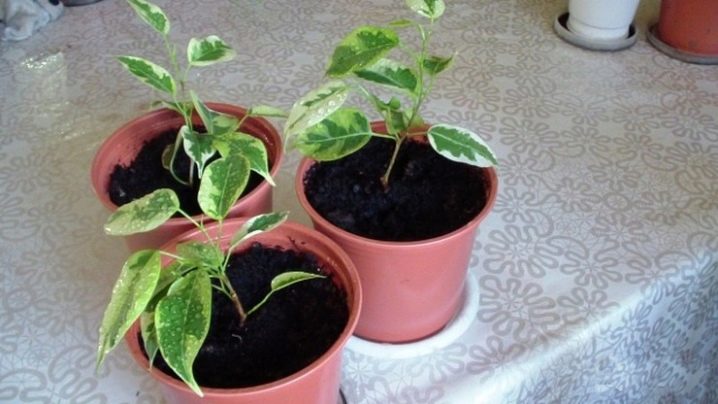
Top dressing
If the temperature has changed at home in winter, then the ficus must be treated with anti-stress drugs. Also, a good solution would be to use complex fertilizers on the eve of the cold season. This is a preventive measure, but it gives the plant good nutrition for the coming months.
You can feed the ficus:
- fertilizer for palm;
- specialized fertilizers for ficuses;
- mineral universal mixtures;
- wood ash in a pot;
- mixture "Ideal".
Feed should be strictly according to the instructions, without changing the proportions. Overfeeding will also be stressful, the plant will not cope with such a load.
Shedding leaves
Inexperienced flower growers will be surprised that the plant crumbles before the beginning of winter. But there are plenty of reasons for the loss of leaves: both home heating and dry hot air. Even a drop in temperature is a potential cause of foliage shedding, although in this case it will not be massive.
Let's figure out why the leaves can still crumble.
- Excess water... As already noted, this is a common mistake made by florists. Due to excess water, the plant suffers. Therefore, if you are afraid of both overflow and insufficient moisture, wipe the ficus leaves with a damp cloth every morning.
- Lack of light... A light-loving plant will certainly show its "character" if it is in overly darkened conditions.
- Lack of nutrients in the soil... Do not skimp on timely feeding.
Finally, if leaf fall is not massive, this may be a natural phenomenon. New foliage will appear in the spring, just watch the plant.
And to make the leaves shine, showing their attractive gloss, some growers wipe them with milk.
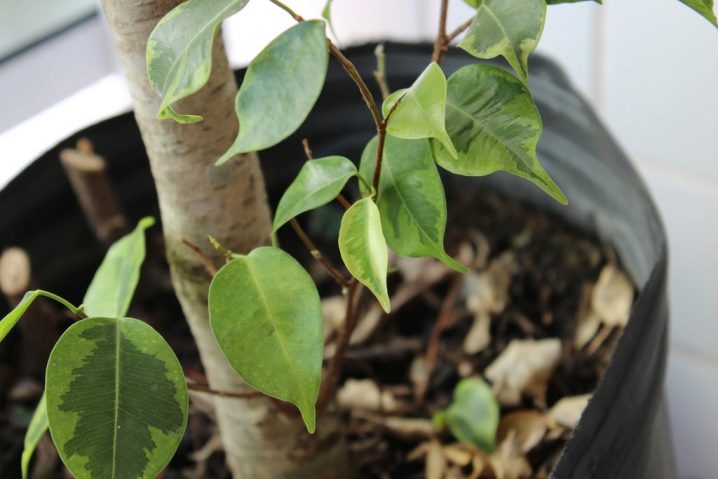
Pests
Certain changes in the appearance of the ficus may indicate that it has been attacked by pests. In winter, the plant is not at all protected: aphids, ticks, and scale insects can attack it. Improper care will also attract pests. For example, a tick attacks a ficus if it grows in a too dry place... And if the plant is cold or lacks water, it becomes vulnerable to fungal diseases.
And yet the grower has reason for optimism - Benjamin's ficus rarely gets sick. At times it can be affected by root rot, but this is only a consequence of improper watering... If you stop rot at an early stage, the ficus will calmly survive this ailment, if you delay, it will die.
You need to deal with rot like this: get the plant out of the pot, shake off the soil from its roots, examine the roots, cut off the affected ones.After that, the crown of the indoor tree should also be cut off. Wherein the cut part of the crown should be in proportion to the cut part of the roots... Only after such careful work will Benjamin's ficus be able to develop further safely. Do not forget that he needs to be transplanted into another container with healthy soil. Watering with a fungicidal solution is also necessary.
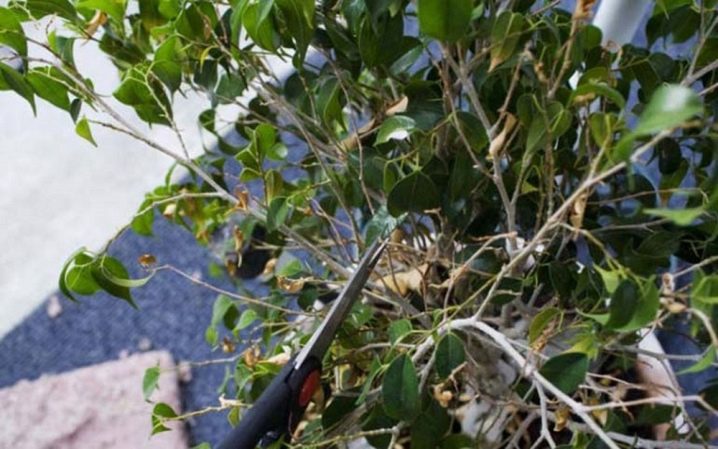
Graft
Ficus Benjamin is a plant that grafts quite successfully. Cultivating culture is not difficult. Can be inoculated into the side incision. You can also use simple copulation and advanced copulation methods.
Inoculation by the method into the cleavage should be as follows:
- make an oblique longitudinal incision on the rootstock in half a branch;
- cut the lower end of the scion with a dihedral wedge to the same depth as the cut on the rootstock;
- insert the wedge into the stock cut;
- Tie the grafted place with foil.
With simple copulation, the scion must be cut obliquely with a sharp knife or scalpel against the cut. A shoot of the same thickness is selected on the plant for the stock. An oblique cut is made on it, equal to the length of the cut of the apical cutting. The graft and rootstock should be connected. The grafting area is wrapped with foil to isolate it from air or moisture.
Summing up, we can say that Benjamin's ficus is a plant that successfully survives the winter. The main thing is to organize proper watering, high-quality lighting and the desired humidity regime. Also, don't forget to feed the plant before the winter season.
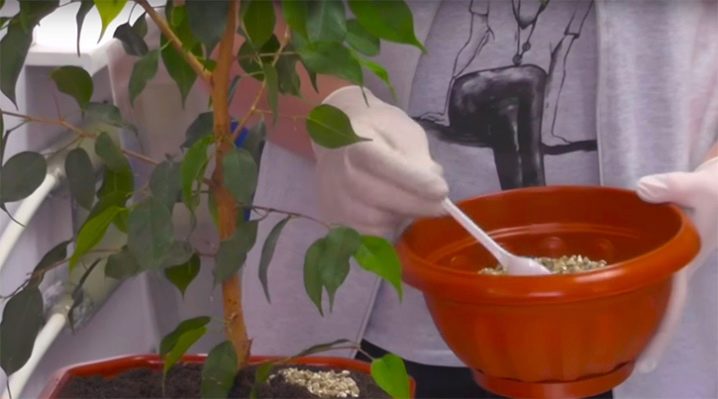































The comment was sent successfully.